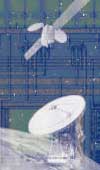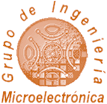
Web Map

Location

News

Santander Info

|
| GIM>Research>project>Diseño Testable de S... |
| PROJECT: |
| | Diseño Testable de Sistemas Heterogéneos con Aplicación a Electrónica Médica |
| Select this link to see PUBLICATIONS within this project |
| |
| Title: | Diseño Testable de Sistemas Heterogéneos con Aplicación a Electrónica Médica |
| Acronym: | |
| Payer: | Cicyt |
| Partners: | |
| Budget: | 112€ |
Years, begin: | 2011 |
end: | 2014 |
| Director: | Salvador Bracho |
| R&D Lines: |
Test methods of digital and mixed integrated circuits
|
| Staff: |
Salvador Bracho
Mar Martínez
Miguel Angel Allende
Román Mozuelos
Yolanda Lechuga
|
| Description: | The study of heterogeneous microelectronic systems, including the analysis of testable design proposals and test methods, is a topic of interest for the Microelectronics Engineering Group of the University of Cantabria, due to the challenge of incorporating of new fault models proposals in the sensors/transducers and the the analysis of of the extension of the test methods, studied up to now, for mixed signal circuits to the complete heterogeneous systems. This process is based on carrying out simulations of the heterogeneous systems, both faulty and fault free, with the aim of proposing valid design and test methods before the fabrication of these systems.
The development of heterogeneous systems including sensors for medical applications, to enable the development of medical devices, is an aim mentioned in the Framework Program of the EU, more specifically in the Work Program for two years 2009-10 in Information Technologies and Communications subject within this Program.
This Project proposes the study of one of these medical devices from the point of view of design and test, with the aim of obtaining a testable design. This device, with application in the diagnosis of cardiac insufficiency, is based on sensors that determine the changes in the blood flow rate near to the heart.
Given that there are proposals of sensors that may form part of a system such as the one proposed, an important task in this work will be to model these sensors, to develop a fault model that in turn enables the proposal of a test method for the complete heterogeneous system.
If as a consequence of studying and modeling the faults of the sensors used nowadays, it appears a necessity to develop a new sensor for this system, we can take advantage of the experience in the design of a wide range of sensors of the National Microelectronics Center (CNM) and on the MEMS fabrication capability of Europractice and the CMP at Grenoble (France).
Medical devices that can detect changes in the blood flow rate and in the heart rate can contribute to the improvement of treatment of cardiovascular diseases (CVDs), and are currently an objective of great interest for the Cardiac Unit of the “Marqués de Valdecilla” Hospital, which will act as Epo in this project.
An important aspect for the medical application of the project results is to study the viability of the resulting medical devices insertion, possibly in connection with the stents implantation usually practiced by the Cardiac Unit in this Hospital.
As well as the biocompatibility, the power supply study of the system should be undertaken, along with the RF communication for transmission of the parameters measured by the medical device to the external monitoring system, where the data will be processed. These requirements increase the design and test challenges of the microelectronic circuits of this device. |
|
|








